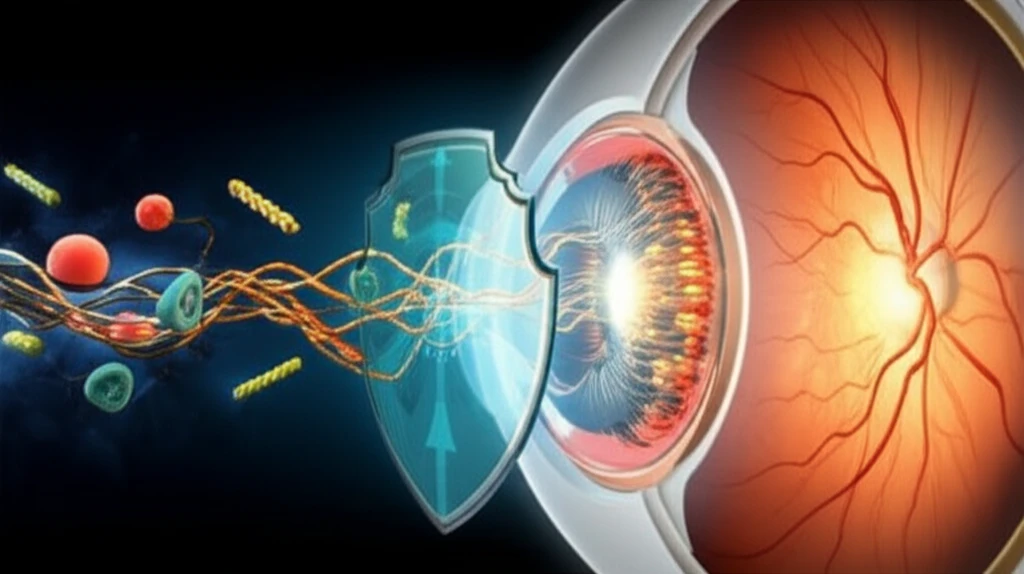
AMD & RPE: Unlocking the Secrets to Age-Related Macular Degeneration
"A deep dive into the latest research on how retinal pigment epithelium (RPE) and mitochondrial health impact age-related macular degeneration (AMD)."
Age-related macular degeneration (AMD) stands as a significant threat to vision, affecting a large portion of the aging population. Characterized by the gradual deterioration of the macula, the central area of the retina responsible for sharp, detailed vision, AMD leads to difficulties in performing everyday tasks such as reading and driving. Understanding the complexities of AMD is crucial for developing effective prevention and treatment strategies.
Recent studies highlight the critical role of the retinal pigment epithelium (RPE) in the development and progression of AMD. The RPE, a layer of cells located beneath the photoreceptors in the retina, supports the health and function of these light-sensitive cells. Dysfunction or damage to the RPE can disrupt the delicate balance within the retina, contributing to the onset of AMD. This article will explore the link between AMD and the RPE, diving into the molecular mechanisms and potential therapeutic interventions.
This article delves into groundbreaking research investigating the intricate relationship between RPE health, mitochondrial function, and the onset of AMD. We’ll explore how age-related changes in mitochondria, the powerhouses of our cells, impact RPE function and contribute to AMD. Discover the exciting possibilities for future treatments, focusing on supporting RPE health and combating the effects of AMD.
The RPE's Vital Role in Protecting Your Vision

The retinal pigment epithelium (RPE) is a single layer of cells that performs several essential functions within the eye, including:
- Nutrient Transport: Delivering vital nutrients to the photoreceptors.
- Waste Removal: Eliminating waste products from the photoreceptors.
- Light Absorption: Absorbing scattered light to enhance visual clarity.
- Phagocytosis: Engulfing and removing shed photoreceptor outer segments.
- Mitochondrial Dysfunction: Age-related changes in mitochondria impair cellular energy production and increase oxidative stress.
- Lipofuscin Accumulation: The build-up of lipofuscin, a metabolic waste product, interferes with RPE function.
- Oxidative Stress: An imbalance between free radical production and antioxidant defenses damages cellular components.
- Inflammation: Chronic inflammation in the macula contributes to RPE damage and dysfunction.
Protecting Your Vision for a Brighter Future
Understanding the complex relationship between RPE health, mitochondrial function, and AMD offers hope for future treatments and preventative strategies. By focusing on supporting RPE function, reducing oxidative stress, and managing inflammation, we can work towards preserving vision and improving the quality of life for individuals at risk of or affected by AMD. Regular eye exams, a healthy lifestyle, and staying informed about the latest research are crucial steps in protecting your vision for a brighter future.
